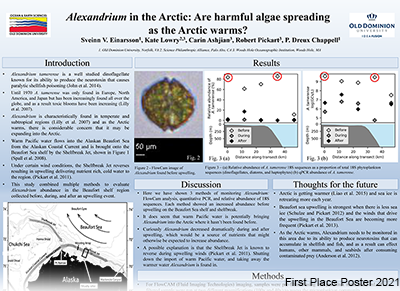College
College of Sciences
Department
Chemistry and Biochemistry
Program
Chemistry
Publication Date
4-2021
DOI
10.25883/54ms-q407
Abstract
Prostate apoptosis response-4 (Par-4) is a pro-apoptotic tumor suppressor protein. We have shown that this 38 kDa full-length Par-4 (Fl-Par-4) protein is predominantly intrinsically disordered in vitro. In vivo, Par-4 is cleaved by caspase-3 at Asp-131 to generate a 24 kDa functionally active cleaved Par-4 (cl-Par-4) fragment. The cl-Par-4 protein inhibits the NF-κB-mediated cell survival pathway and causes selective apoptosis in various tumor cells. Our laboratory is interested in how the disorder-order balance within Fl-Par-4 and cl-Par-4 may be related to the balance between cell survival and cell death. Currently, we are using biophysical techniques such as circular dichroism (CD) spectroscopy, dynamic light scattering (DLS), UV-vis spectroscopy and SDS-PAGE to characterize the structure of cl-Par-4 in the presence of various concentrations of monovalent and divalent ions, in order to shed light on the possible ion-specific role of cl-Par-4 in inducing structure and self-association of this protein. Results show that effects on cl-Par-4 conformation are ion-specific, and effects of divalent cations are considerably more pronounced than effects from monovalent cations. We have also found that the anion moiety of a salt possesses almost negligible influence.
Keywords
Intrinsically disordered protein (IDP), Prostate apoptosis response-4 (Par-4), Tumor suppressor, Circular dichroism (CD) spectroscopy, Dynamic light scattering (DLS)
Disciplines
Biochemistry | Cancer Biology | Cell Biology | Chemistry
Files
Download Full Text (1.1 MB)
Recommended Citation
Raut, Krishna K.; Ponniah, Komala; and Pascal, Steven M., "Influence of Monovalent and Divalent Ions in the Conformational Change of Caspase-Cleaved Par-4 (cl-Par-4) Tumor Suppressor Protein" (2021). College of Sciences Posters. 1.
https://digitalcommons.odu.edu/gradposters2021_sciences/1



